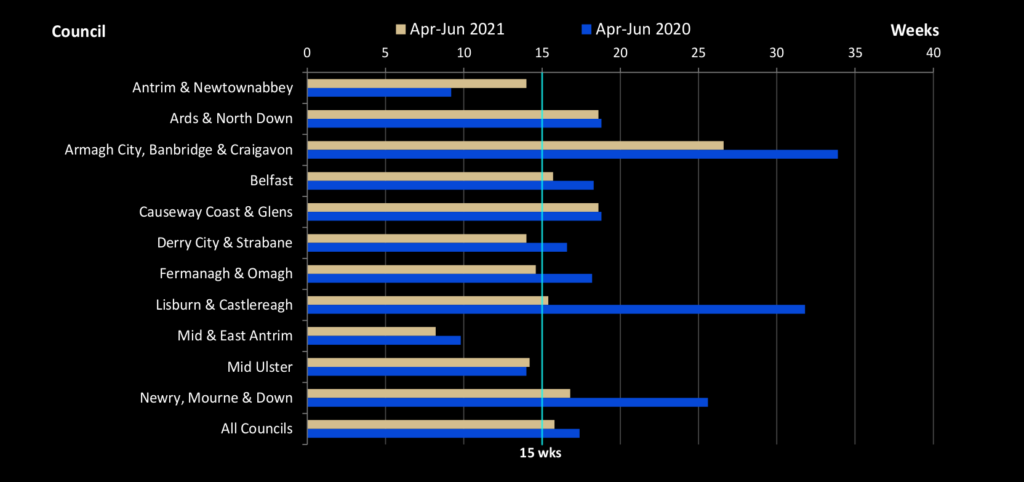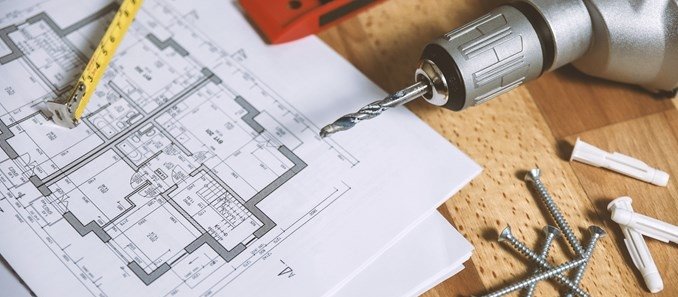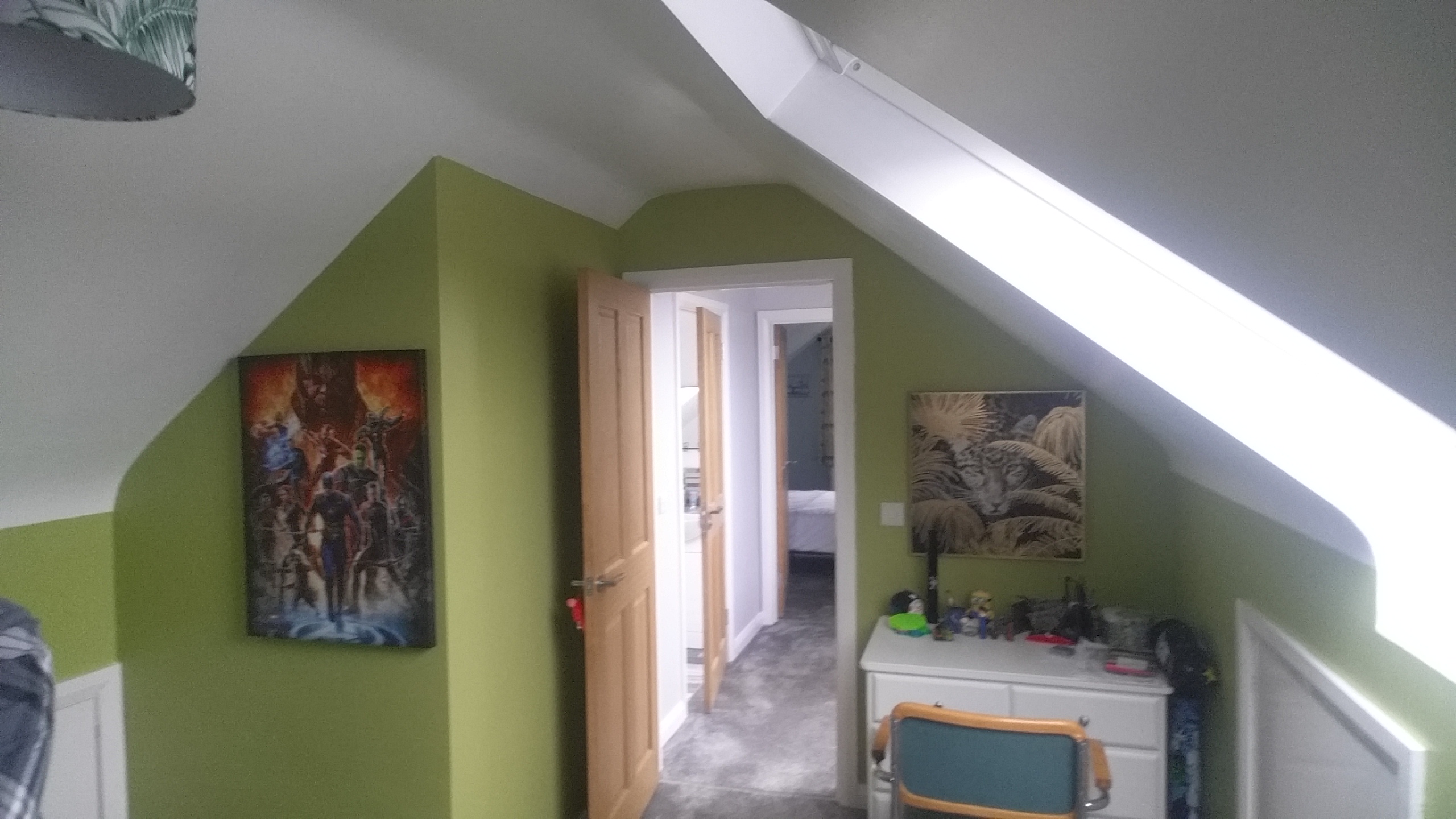So how long you need to wait till you can start cracking with building work on your house improvement project, if you need a Planning Permission to do so?
If your house improvement project does not fall within Permitted Development category, it will need a Planning Application to be made. It requires lodgement of correctly filled application form (link) with drawings and prescribed fee (for a house improvement typically it would be a £291.00 as of September 2021). Right now let’s assume you have the design ready, showing works you are committed to undertake. Drawings of course need to be in sufficient level of detail for Planners to determine what you are up to. In addition to drawings, to accompany the Planning Application, you will need outline specifications (typically list of external finishes on your proposed building work is sufficient). So you lodge the Planning Application, dial back on £291.00 or there about, and what next? When will you hear back from your local Planning Office, that your plans are approved and you can start work? Next working day? Within 2 weeks? Let’s try to find out, and if you are in a rush, you may find a bold section somewhere below giving you a simple answer to this simple question. If you are up to reading – you can switch browser to dark mode, and so relax your eyes a bit, as it should all be still readable!
Planning Departments have 15 weeks target time to determine Planning Applications.
from conversation with a Planning Officer at Belfast City Council, October 2021
It seems that in England time-frame is simply 8 weeks. In conversation with officer at a Northern Irish Planning Office I got explanation: “but England has the process streamlined”. It gives a hint of a looming disappointment. However, if you look on Northern Irish government website you may get a clear cut answer that is in line with how things are in England. As of 22 October 2021 you can read at https://www.nidirect.gov.uk/articles/making-planning-decision the following statement: “The council should make a decision on your application within eight weeks. But it can take longer to decide large or complex applications. The local planning office can tell you more about timetables. If your application isn’t determined within eight weeks, you can appeal to the Planning Appeals Commission.” I just wanted to check, if planners are telling the same story hence I made a phone call to Planning Department of a local Council.

Calling Planning Department of a Local Council firstly I got the answer from the person picking the phone (who have to be “business support” personnel. There the answer was “12 weeks” as the target time within which Planning Applications should be determined. For this or other reason, however, I was granted access to “Planner on Duty”. I used this opportunity to ask the same question. I was given different answer: Planning Applications have target time of “15 weeks” for determination. The 12 weeks was explained as Department’s own “internal target” timescale. I didn’t get any good explanation or comment on the “8 weeks” target that is specified on government website. So here we go: wait for 15 weeks and keep your fingers crossed, because the 15 weeks is only a “target timescale”. In reality Planning Applications are taking various times. Let’s look into some data from the past to have bit better idea how things are in real life. Let’s look into Northern Ireland Planning Statistics, Bulletin for first quarter of 2021/22.

So the above picture gives us some idea of real-life time-frames, and even broken down into councils. You may be lucky if you live in Mid & East Antrim or less so, if you happened to settle in Armagh City, Banbridge & Craigavon. So, while it greatly varies depending on your location, for one thing – getting Planning Permission takes a long time of waiting! But why?
Why does it take so long?
While there may be something to do with geography and your particular Council, your application may have individual conditions predisposing it for a long or short wait. There may those applications, too, which look like not a big deal at the outset, but prove to be time draining only after the process had started.
Here is a list of, what I think, possible delayers:
- consulting organisations – response time and cooperation responsiveness
- general backlog in the planning office
- you / your agent – missing information in the application
- your financing organisation: e.g. Grant-money provider
- your consultant, e.g.: Occupational Therapist
- other reasons and miscommunications

1. Consulting organisations
Process of getting the approval (or rejection!) is a bit complex and compromises number of steps. The work is done not only by the Planners but as well by other organisations. Hence long processing of application may have little to do with planners in charge. Often planners have to consult some outside bodies, typically government departments and such. It may be “DfI Roads” to assess things like access to site and related visibility on the road or of the road, parking spaces required. It may be “NI Water” to deal with drainage and water. It may be number of other organisations. Some of them may simply be slow with responding for variety of reasons. They may be, as well, slow to engage with your designer, if there is a good hope to adjust design to more acceptable form, rather than reject the application outright!
2. Backlog in planning system
There are times that Planning Offices receive more applications than usually, as well as more than they can handle. That is rather predictable circumstance. It may have to do with usual economic cycle, that is so typical to building industry and property market in general. There may be more complex applications that office may be dealing with, or simple ones that in planning process prove to be not-so-simple!
3. Missing information on your behalf
As well, it may be you or your agent – some information in your planning application may be missing and you may get it back to complete or correct it, leading to a delay in processing. Such issues should be picked at the early stage, at validation of the application stage, but they may crop up latter too.
4. Your own consultee or grant-provider
Planners may request changes to the design, that you yourself won’t be able to do without external approval. Such situation may be, if you have a Grant financing your building. Granting authority may need to review if your changes requested by Planners as acceptable and don’t invalidate your grant application. It may take you months to get back to planners with revised design in such a case! As example, you may be having already secured Disabled Facilities Grant (DFG), but to revise design as requested by Planners you will need approval from your Occupational Therapist (OT) and as well by Northern Ireland Housing Executive (NIHE). Good luck with that being a quick thing!
5. Miss-communication
At times it is simply difficult (to get a football analogy) to determine ‘who is on the ball’. Planners may have issued your revised drawings to some consulting body, while you may still wait for same revisions to be accepted by your own team. You may wander who will move first or who is simply waiting for whom. Another example may be, where planners tell you they will contact address-less neighbour, while few weeks later coming back to you to provide them ‘the address’.
Planning Process Steps
Finally, you may ask: so what are the planners doing anyway. And there are some steps that planning application goes trough. I have some idea of it, but my list may be far from acurate. Here I bring it up just for you to have a feel for the complexity and have idea of time it MUST involve. Let me just get a basic list here. And by the way – you can track progress of your application at: https://epicpublic.planningni.gov.uk/publicaccess/
Steps in processing a Planning Application (on straightforward house improvement project):
- acknowledgement of reception of planning application
- validation of application (is information complete)
- registration (documents are scanned and put for public viewing on internet)
- site visit (by Case Office Planner)
- neighbour notification
- sending requests to public consulting bodies
- engagement in consultations (with waiting for consultees responses, measured in weeks)
- consultations may evolve in a design process in its own right, with your design being revised
- preparation of report (and recommendation for approval or rejection!) by Case Officer of the Planning Department
- Development Management Group discussion on the report. DMG may meet only once a week.
- Senior Planner decides on the application. (By default house improvement projects are decided in-house, but MLA may ask to get your application to Council Planning Committee, which may only be expected to lengthen the process).
- Issue of certificate.
Wrap up
Planning is a relatively complex process and requires time. Some applications, and building works that they relate to, superficial may look simple, but prove otherwise. I was informed that simple domestic project may stay in planning process for over one year! I am not saying it will happen to yours, but … If by any chance you can avail from using the Permitted Development route for your project, do so by all means. In the process you will not only save few hundred pounds but you may end up months of time ahead! Let me know if the above was of help to you or you have some tip/information, that you think is missing here. You can use the comments section below or contact me directly.






Leave A Comment